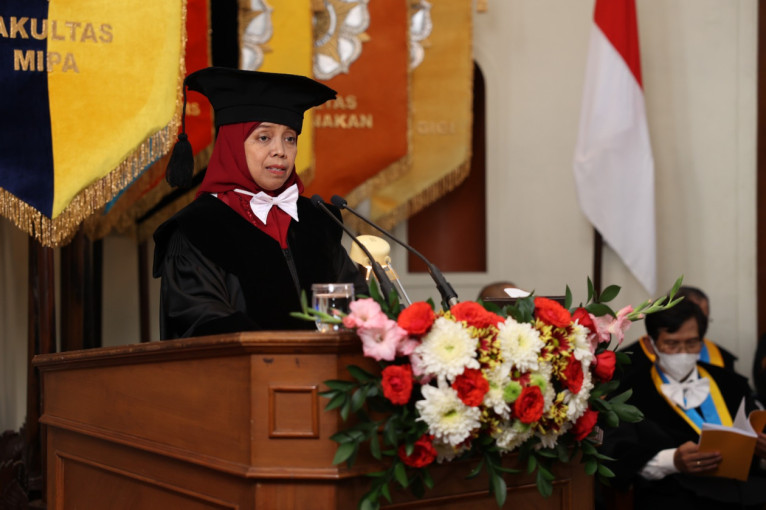
In a momentous academic milestone, Professor Indriana Kartini, a distinguished faculty member at the UGM Faculty of Mathematics and Natural Sciences, has been formally inaugurated as a professor of chemistry.
Taking center stage, she delivered an inaugural speech titled “Sustainable Nanochemistry for the Revitalization of Natural Dyes Towards Human Prosperity and Environmental Sustainability” on Thursday (Nov. 30) at the UGM Senate Hall.
Professor Kartini articulated that nanochemistry, a burgeoning sub-discipline within chemistry and materials science, is intricately linked to the evolution of novel methodologies for crafting materials at the nanometer scale.
The utilization of nanotechnology, she emphasized, has permeated various facets of human endeavors throughout history. Drawing a vivid example, she pointed out that artisans engaged in pottery have seamlessly incorporated nanomaterials, namely clay, for over 17,000 years.
“The inherent properties of clay, including its pliability and low sintering temperature, have rendered pottery production cost-effective, all attributed to the nanometer-scale structure of clay,” explained the professor.
However, the contemporary trajectory of nanochemistry centers on the reinvigoration of natural dyes across realms encompassing apparel, energy, and health.
Nanochemistry, coupled with nanotechnology, isn’t solely breathing new life into natural dyes but also extending its transformative touch to other invaluable natural resources such as natural polymers, minerals, and marine treasures.
In the textile industry, the application of nanochemistry underscores a burgeoning societal consciousness geared toward a healthier environment, coupled with a resurging preference for apparel adorned with natural dyes.
In this sartorial realm, nanochemistry bequeaths natural dyes with enhancements, bestowing antibacterial properties, water resistance, stain repellency, UV protection, fire resistance, and augmented resistance against color fading.
“The allure of natural dyes in apparel lies in the seamless softness and vividness of the hues they impart,” she said.
Yet, Professor Kartini said that the abundant wellspring of biodiversity within natural dye materials remains relatively untouched by the transformative prowess of nanotechnology.
Through engineering at the atomic-molecular level, nanometer-sized natural dyes can be elevated to unprecedented aesthetic and functional heights.
Nanochemistry manifests its energy domain prowess by spearheading the resurgence of natural dyes as photosensitizers for dye-sensitized solar cells and applications in photodynamic therapy.
This application extends its reach beyond the realms of solar cells into the healthcare sector, notably in cancer treatment, through the groundbreaking avenue of photodynamic therapy.
“Photodynamic therapy stands out as a non-invasive and highly effective treatment methodology, seamlessly merging light and sensitizer functionalities to combat and obliterate tumor cells,” she concluded.
Author: Gusti Grehenson
Photographer: Firsto

